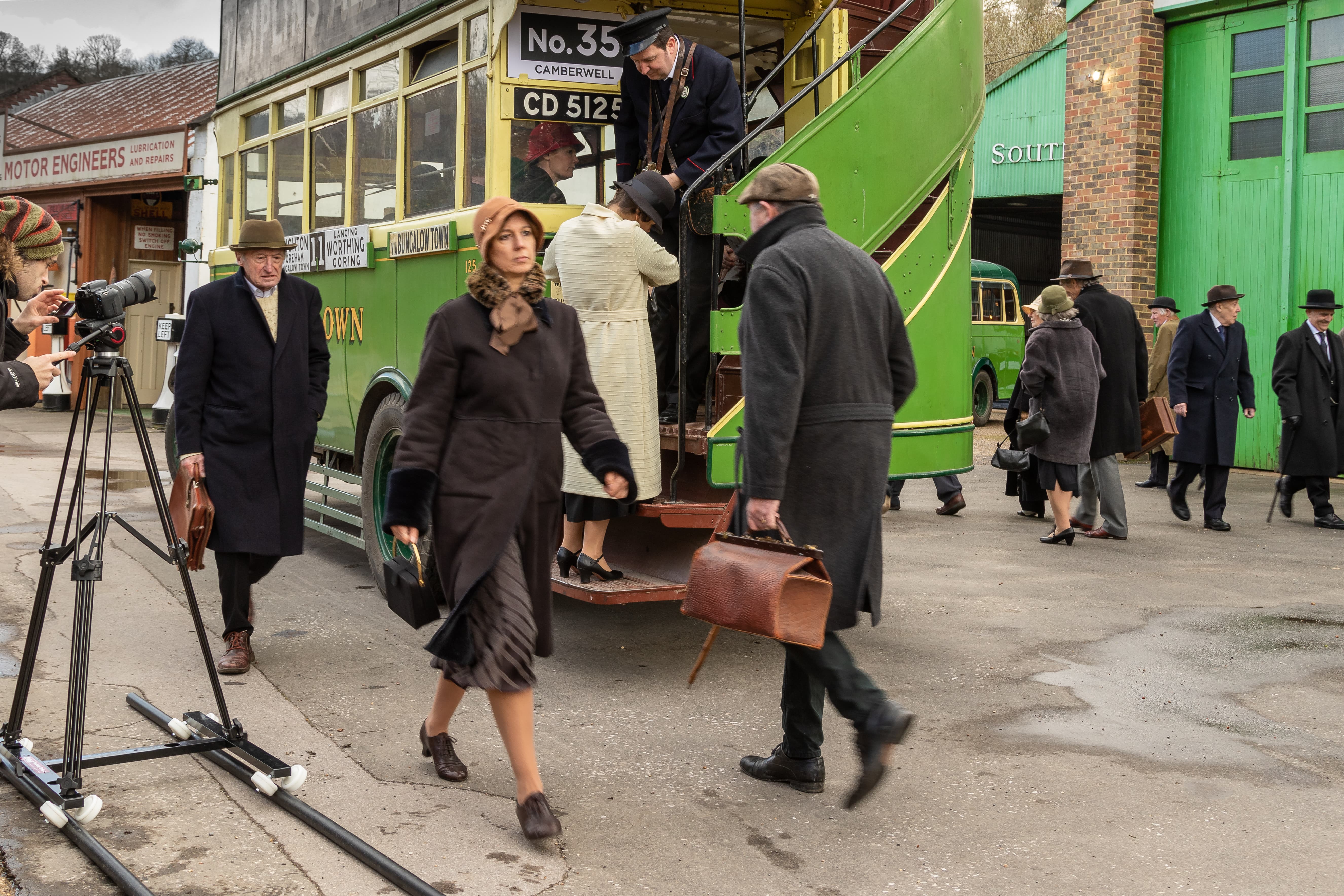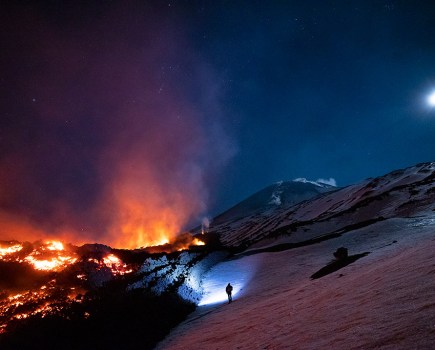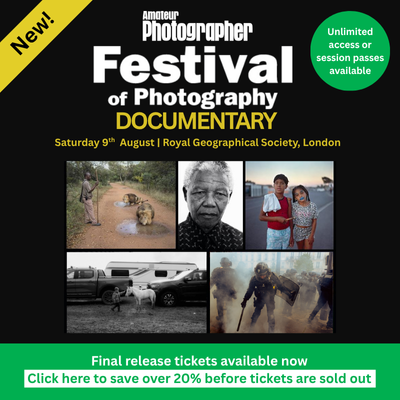It’s a rare thing, to come across a bona fide feature film director that’s under 20 years old. Moreover, one that has been producing films for almost a decade, has been cited as being ‘the next Speilberg’ by Culture Trip, and has seen previous works featured in prestigious film festivals and premiered in exotic locations, such as the Maldives. To date, Elliott is the youngest director to have a film screened at the Edinburgh Festival Fringe.
It was for these reasons, primarily, that we felt the urge to strike up a conversation with the prodigy that is Elliott Hasler, to delve deeper into his own story. We found him on a bright and sunny day, in between shooting the final scenes of Vindication Swim at his local seafront in Hove. Vindication Swim is a biopic of Mercedes Gleitze, an almost-forgotten heroine, who in 1927 became the first British woman to swim the English Channel. We also share some stills from the movie, and you can learn more on YouTube.

How does a 19-year-old get to direct a feature film? Tell us a bit about your journey into filmmaking and what’s led you to this point.
I’ve been making films since I was around 10 years old and these gradually got bigger and better over time. It really started out as a family affair, with relatives standing in to act and to help produce. We used to have big family gatherings to premiere the films with red carpets and champagne; the whole deal. It continues in a sense, as my father manages me now and works really hard behind the scenes in production and logistics.
When I was 16, I made my first feature, called Charlie’s Letters. That made for a release under the re-vamped name, WWII – The Long Road Home. That film was really a labour of love, as it told the story of my great-grandfather’s own experiences during the second world war and his epic battle for survival whilst on the run in war-torn Italy after escaping from a concentration camp. It’s a piece I’m really proud of and, thankfully, it achieved quite a bit of traction within film festivals and saw some good press. It’s now about to be released and that really enabled me to move on to make Vindication Swim.
Growing from a nine-year-old filmmaker to today, you’ve clearly learned a lot about filmmaking. Have you had any formal training?
I’ve never had any formal training. My education has been based around watching movies. That was my film school. I think that’s all you need, really. I mean, I’ve spent a lot of hours watching movies with the Director’s commentary on, which is invaluable training for anyone who wants to become a filmmaker. You can learn so much that way.
Serious filmmaking requires serious finance. How have you approached financing the production of Vindication Swim?
In my spare time, I rob banks! That’s how I get the money. (Laughs), but yeah, luckily, from the distribution deal for Charlie’s Letters, we were able to get a bit of a budget together. It’s a tiny budget, but we have some money for this project, which is novel and of course, a good thing.
Do you ever offer your filmmaking skills to commercial clients to raise funds for your personal projects? I’ve made some adverts over the years, but I haven’t done anything like that for a while. I mean, there’s been so much time that’s gone into this film, I can’t take on any other jobs, It’s all hands on deck for this one. Pardon the pun.

Tell us why you’ve chosen to make Vindication Swim. What is it that appeals to you about the story?
It’s just so inspiring. I mean, she’s from Brighton, (Mercedes Gleitze), so she’s a local, too. I’m from Brighton, as is the whole crew, so it’s a very local project in that sense. What she did was incredible. To be able to swim the channel as a woman in the 1920s was no easy feat. I mean, even today, more people have climbed Mt. Everest than have successfully swum across the English Channel, so I think it is just an inspiring story. Furthermore, it’s a story that’s been completely forgotten, which is a terrible shame. So I feel that, if I can help to get her name back out there, I’m all for that.
How have you built the cast and crew for the film; casting the actors, organising locations, and logistics, such as shooting at sea?
We started casting about two years ago. Some of the actors I knew before from other projects, so we brought them back in, along with some new faces. Locations have been the easiest part, really, because we’re filming out at sea for the majority of scenes, but logistically it’s been really challenging. Firstly, the weather has to be just right, and safety’s a crucial aspect. We have support and safety boats shadowing us at all times. Add Covid-19 complications into the mix and it has been a bit of a headache at times. It’s all paying off, though, so I’m pretty happy.
What have been the biggest challenges you’ve faced with the project so far?
Well, shooting anything on land is now easy when compared to filming at sea! There’s no other way to put it really. I mean, I now have no respect for anybody who says filming on land is difficult if they haven’t shot at sea. That’s where the challenge is.

Have you had any support from the film in terms of brand support or sponsorship?
We’ve had a bit of that. I mean, the ethos behind the film is that it’s a local project, so people from the community have been really supportive and helpful. In terms of gaining access to locations and general logistics, the community in and around Brighton has been great. We’ve had offers from vintage car owners, extras, costume owners and lots of help with shooting at sea. They’ve all been happy to come on board and help out and no cost, which is how we’ve been able to produce such a high-quality film on such a small budget.
You’ve had a local camera club documenting the process, too?
We’ve got some wonderful behind the scenes stills and lots of great shots from the movie, which is just invaluable. You can’t really market a film effectively without that kind of content, I don’t think. It’s another example of the community pulling together and I think the club members have really enjoyed the process, too.
What kind of equipment have you been using to shoot Vindication Swim?
It all really goes back to the logistics of filming out at sea, which within our circumstances has meant Yeah, I mean, it’s all light and portable, run and gun kit, really. The gear has to be quite light and easy to transport, because of the limited amount of space on the boat and other factors, so we’re shooting primarily with a Canon 770D and an 18-35mm sigma lens. It’s not the most high tech camera system in the world, but it produces beautiful shots and that’s really all I need.
Once you’ve got everything in the bag in terms of shooting, what are your plans for editing the film?Because of the COVID situation, we managed to catch up with editing during the lockdown. Really, there was not much else to do, so in a strange way, it’s been helpful. It’s been topsy turvy, I guess. We skipped some of the production stages and went into post-production; now we’re back in production, so it’s worked quite nicely, really. It’s allowed us to sit and refine what we’ve done and really figure out what we now need to shoot to get the very best result.
Have you got a route to market planned for Vindication Swim?
Cannes is the aim for this one. In 2022 we hope to show it as a part of the festival.
Are you planning your next project already?
There are some small wheels turning, but my focus is on this film for now. It’s such a big project, so I can’t be distracted by other things at the moment. But yes, there are small wheels turning in the background.
What piece of advice would you give to other young and aspiring filmmakers?
Just pick up the camera and shoot something. I mean, literally, shoot anything and then try and make a bit of a narrative out of it. I think that’s the best experience you can get, really. Trial and error; practice techniques and see what you capture. Make mistakes and learn.









